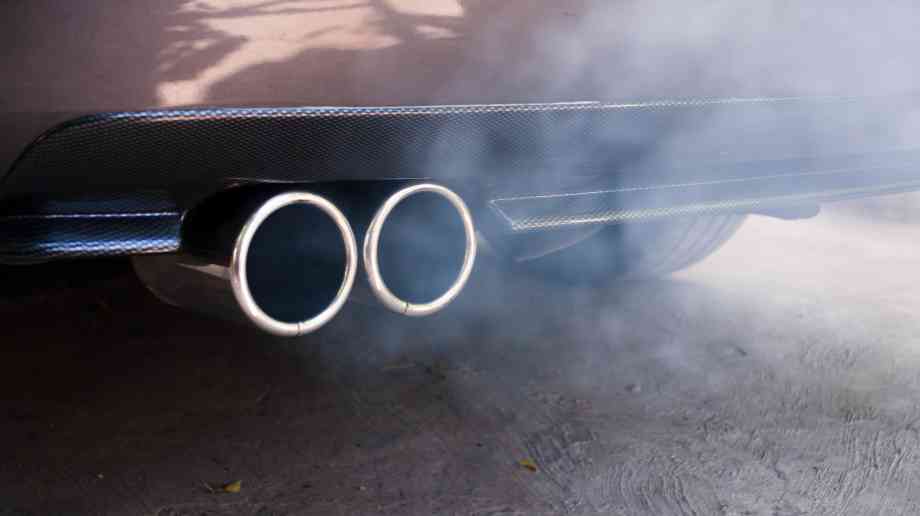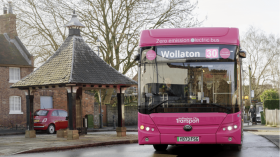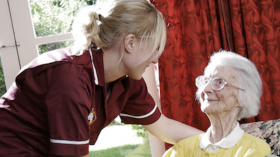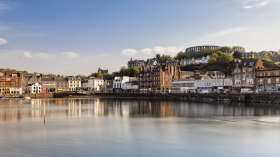Sue Robb of 4Children talks to Julie Laughton and Alison Britton from the Department for Education about the role of childminders in delivering the 30 hours free entitlement.
Brixton clean Bus Zone to tackle toxic air

The Mayor of London has delivered the second in his network of 12 Low Emission Bus Zones in Brixton Road.
The new clean bus zone, running from Brixton Hill via Stockwell Road and Streatham High Road to Streatham Place, carries 130,000 passengers a day on a total of 450 bases on 23 scheduled routes. The route travels near a number of primary schools, meaning more than 1,000 local children are now breathing cleaner air, as well as past Brixton Tube station which sees over 50,000 passengers a day enter and exit via Brixton Road.
As of now, only buses that meet the toughest emission standards are permitted to run within the Brixton Low Emission Bus Zone. Every bus on the route meets Euro VI standards through a combination of new and retrofitted buses. More than 200 of the buses are new double-deck Euro VI hybrid buses, there are 13 new single-deck cleaner diesel buses, and 230 buses have been retrofitted to meet a Euro VI emission standard.
It is the second of 12 new Low Emission Bus Zones to be introduced in heavily polluted areas.
The first zone was launched on Putney High Street in March earlier this year. Already the Putney route has seen a 90 per cent reduction in hourly pollution level breaches and early analysis suggests a 40 per cent reduction in annual NO2 concentrations at Putney High Street.
The polluted Brixton to Streatham route exceeded hourly legal levels of nitrogen dioxide on 539 occasions in 2016 and breached annal legal pollution limits by 5 January this year. Under EU rules, the limit should not be exceeded more than 18 times in a year.
10 more Low Emission Bus Zones will follow Brixton and Putney, and will be delivered by 2020.
The zones represent the most extensive network of clean buses of any major work city.
The routes are one part of a major transformation the Mayor has asked TfL to deliver to reduce emissions from London’s bus fleet, including the phasing out of diesel-only buses and a commitment to purchase only hybrid and zero-emission double-decker buses from 2018.
Thousands of school children are to benefit from the introduction of the Low Emission Bus Zones, with 172 schools located within 100 metres of the new zones.
In addition, the benefits of operating the greenest buses will be felt across the capital as the buses operate the full length of their routes. The changes are expected to reduce bus emissions over the 12 zones by over 80 per cent.
The Mayor has also proposed to expand the Ultra Low Emission Zone up to the North and South circular roads for all vehicles from 25 October 2021. He is also consulting on expanding the ULEZ standards Londonwide for heavy vehicles like buses, coaches and lorries.
Additionally, the Mayor is phasing out diesel taxis, funding 50 schools’ APOS air quality audits, setting tighter standards for construction machinery and introducing air quality alerts.
To help motorists make cleaner choices he has created a Cleaner Vehicle Checker, so Londoners can check the real-world emissions of car and vans before buying them, as well as introducing the world’s toughest emissions standard with the launch of the £10 Toxicity Charge (T-Charge) in central London for the oldest vehicles.
Sadiq Khan, Mayor of London, said: “To tackle this lethal air we need a dramatic reduction in harmful emissions from polluting buses and older more polluting vehicles. I am committed to making our bus fleet the greenest in the world and today I’ve continued to deliver on that pledge by launching the second of my Low Emission Bus Zones in Brixton.
“I have tasked TfL with transforming the public transport network, which includes removing or retrofitting the oldest, dirtiest buses on our streets to cut harmful emissions. We’ve already seen a massive improvement in air quality along the Putney route. I’m confident that will be replicated here in Brixton and along the 10 other routes where we are introducing Low Emission Bus Zones.
“I’m working relentlessly to do everything in my power to clean up London’s air. Now, the Government needs to help tackle the challenge we face. Rather than preventing the capital from accessing the new National Clean Air Fund, ministers should be delivering a vehicle scrappage fund to get the filthiest cars off our roads. Londoners are living through a public health crisis and need a government which will take action on the toxic air we breathe.”
Lib Peck, leader of Lambeth Council, said: “Having a clean bus corridor through the heart of our borough is something we’ve been campaigning for for a long time and I’m delighted that the Mayor has implemented this. Poor air quality is a killer, there is no doubt about that, and we are determined here in Lambeth to do all we can to tackle pollution and improve the air we breathe. This is an issue that needs us all to work together and I’m encouraged by the Mayor’s commitment to do just that.”
Claire Mann, TfL’s director of bus operations, said: “I’m excited about the launch of this second Low Emission Bus Zone in Brixton after very encouraging initial results from the first, in Putney. This is yet another important stepping stone on the way to making the Mayor’s vision of a less polluted cleaner capital come true. Greener buses will help transform air quality and make for a more welcoming town centre.”
Company Focus
Just Lanyards is a subsidiary name of Gifts 2 Impress Limited, who have been trading for over 25 years, we therefore pride ourselves in having endless experience covering all aspects of the promotional merchandise industry.
Event Diary
UKREiiF has quickly become a must-attend in the industry calendar for Government departments and local authorities.
The multi-award-winning UK Construction Week (UKCW), is the UK’s biggest trade event for the built environment that connects the whole supply chain to be the catalyst for growth and positive change in the industry.
Supplier Profiles
Geo Energy
At GeoEnergy Design, we're on a mission to disrupt the traditional way heating and cooling ha
Latest Features
Professor Harith Alani, director of the Knowledge Management Institute at the Open University explains how AI can be used for good and bad.
Alex Lawrence, head of health & social care, techUK sets out techUK’s Five Point Plan for CareTech.

















